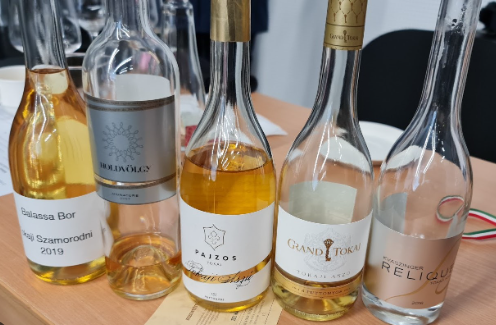When it comes to exceptional wines, Hungary stands tall as a land of rich traditions and exquisite tastes. Among its many vinous treasures, Hungarian natural sweet wines hold a special place. These wines, renowned for their complexity and balance, have earned a devoted following around the world. In this article, we will delve into the world of Hungarian natural sweet wines. Therefore, exploring their history, production methods, and some notable varieties.
The Sweet Elegance of Tokaji Aszú
To delve into Hungarian sweet wines, we must begin with the illustrious Tokaji Aszú. Originating in the 17th century, this sweet wine hails from the Tokaj region. Crafted from late-harvest grapes affected by the noble rot, Botrytis cinerea, it intensifies the sugars and flavors within the grapes, resulting in a lusciously sweet wine with vibrant acidity.
Shifting our focus to the production process, Tokaji Aszú vintners handpick grapes, meticulously selecting only the botrytized berries. These vintners then fastidiously press these grapes and blend their juice with a base wine. The sweetness level is categorized using the puttonyos system, which spans from three to six puttonyos, signifying higher puttonyos for enhanced sweetness and complexity.
Essence of Sun-Kissed Grapes: The Role of Botrytis
Furthermore, Botrytis cinerea, also known as noble rot. This is a fungal infection that, under specific climatic conditions, can be a winemaker’s best friend. In Hungary, especially in Tokaj, Botrytis cinerea is a key player in the production of natural sweet wines.
Transitioning to the role of noble rot, this beneficial fungus attacks the grapes, piercing their skins and causing dehydration. This process concentrates the sugars and flavors within the grape while retaining the grape’s acidity. The result is a harmonious balance between sweetness and acidity, a hallmark of Hungarian natural sweet wines.
Discovering the Secret of Hárslevelű
Hárslevelű, another indigenous Hungarian grape variety, is often used in the production of sweet wines. Known for its aromatic qualities and excellent acidity, Hárslevelű brings a unique character to Hungarian sweet wines.
Transitioning to the role of Hárslevelű, this grape contributes floral and honeyed aromas to the wine, along with a refreshing acidity that balances the sweetness. When used in blends or as a varietal, Hárslevelű showcases its versatility and ability to create wines that range from light and delicate to intensely sweet and complex.

Pairing Hungarian Sweet Wines with Cuisine
Hungarian sweet wines are exceptionally versatile when it comes to food pairings. Their complex flavors and well-balanced sweetness make them an excellent choice for a variety of dishes. Whether it’s pairing Tokaji Aszú with foie gras, Hárslevelű with spicy Asian cuisine, or Furmint with blue cheese, these wines elevate the dining experience.
Transitioning to food pairings, the acidity in Hungarian sweet wines acts as a palate cleanser, making them ideal companions for rich and fatty foods. The sweetness complements spicy dishes, while the diverse aromas and flavors of these wines can enhance the nuances of both sweet and savory courses.
Conclusion
In the world of wine, Hungarian natural sweet wines are a symphony of flavors, where tradition harmonizes with innovation, and ancient vineyards yield liquid gold. From the legendary Tokaji Aszú to the underrated Furmint and Hárslevelű, these wines offer a sensory journey like no other. Visit casino sites, play online poker and enjoy the game.




